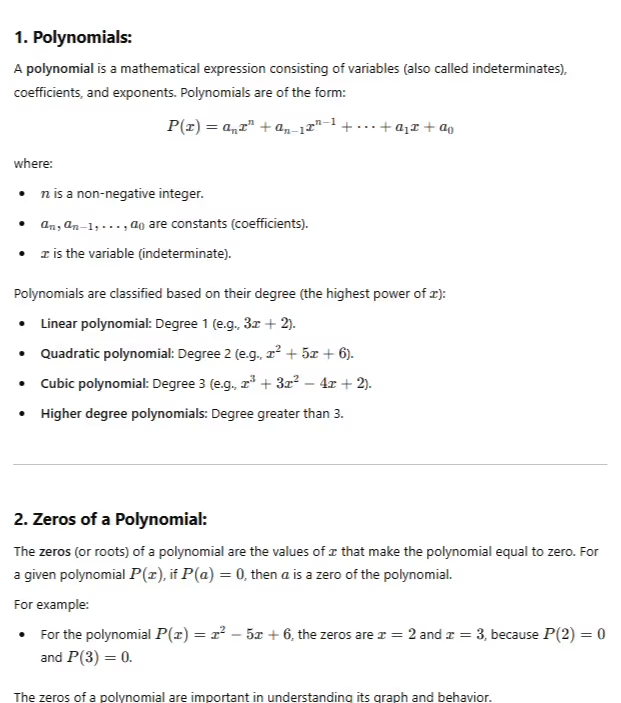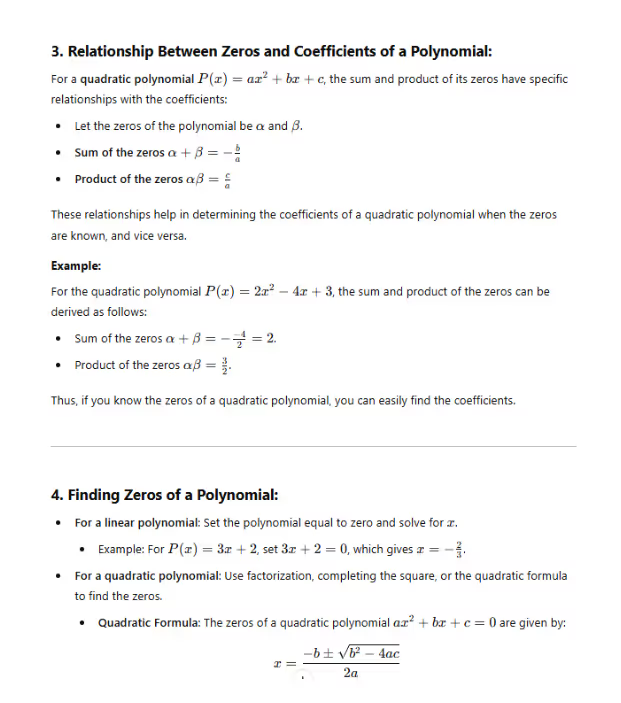Strengthen your preparation for the CBSE Class 10 Board Exams with this guide on CBSE Class 10 Mathematics Chapter 2 Important Questions - Polynomials. Explore key concepts like physical and chemical properties, reactivity series, and practical applications to excel in exams confidently.
Here are 50 important questions on Cbse Class 10 Mathematics Chapter 2 Important Questions - Polynomials
These questions cover various aspects of Polynomials, including their properties, reactions, uses, and applications as presented in the document provided, ensuring comprehensive coverage of key topics within this chapter on Polynomials.
The chapter “Polynomials” in Class 10 Science explores the fundamental properties, reactivity, and applications of Polynomials. Below is a detailed explanation of the key topics covered in this chapter based on class 10 science syllabus:


.avif)
In Metals and Non-Metals, students learn to distinguish between the physical and chemical properties of metals and non-metals, along with their reactivity series.
Mastering these concepts is essential for tackling questions in the CBSE Class 10 Board Exams.
Focusing on CBSE Class 10 Mathematics Chapter 2 Important Questions - Metals and Non-Metals and reviewing related sample papers will enhance understanding and exam performance. Consistent revision and well-organized notes are key to acing this chapter.
Chapter 1 Chemical Reactions And Equations
Chapter 2 Acids, Bases, And Salts
Chapter 3 Metals And Non-Metals
Chapter 4 Carbon and its compounds
Chapter 6 Control And Coordination
Chapter 7 How Do Organisms Reproduce?
Chapter 8 Heredity And Evolution
Chapter 9 Light – Reflection And Refraction
Chapter 10 The Human Eye And The Colourful World
Chapter 12 Magnetic Effects Of Electric Current
Also Refer:
Below are some of the frequently asked question on the topic Polynomials class 10 maths:

A polynomial is an expression involving variables and coefficients, with non-negative integer exponents on the variables. For example, 3x² + 5x-4 is a polynomial.

To find the zeros of a quadratic polynomial, you can use factorization, completing the square, or the quadratic formula x = -b±√b²-4ac / 2a

For a quadratic polynomial ax² + bx + c, the sum of the zeros is -b/a, and the product of the zeros is c/a.

The degree of a polynomial is the highest power of the variable z in the polynomial. For example, the degree of 4x³ + 2x² x+7 is 3.

A monic polynomial is a polynomial where the coefficient of the highest degree term is 1. For example, x² + 3x + 2 is a monic polynomial. A non-monic polynomial has a leading coefficient other than 1, like 2x² + 3x + 5.